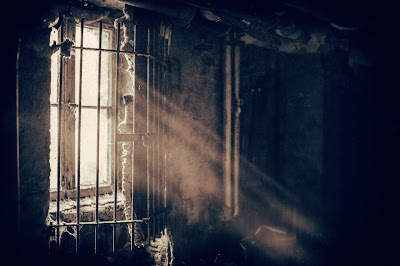by Oded Mizrahi, translated by Hillel Fendel
A true Hassidic tale, in honor of the 19th of Kislev – the date the first Chabad Rebbe was freed from the Czar's prison.
In the late 18th Century, at the height of the tensions between the young Hassidic movement and its opponents the Misnagdim, the latter did almost everything they could to repress the Hassidim. Some of them even informed on Rebbe Shneur Zalman of Liadi, founder of the Chabad movement, to the Russian authorities. This drastic step was taken according to an official religious dispensation, as part of the excommunication of the Hassidim.
The informers accused the Rebbe of sending money to his followers in the Land of Israel, thus aiding the Ottoman Empire that then ruled the Holy Land and which was a bitter adversary of Czarist Russia. As a result, the Rebbe was arrested during Sukkot of 1798. Only after many efforts on the part of the Hassidim was he released nearly eight weeks later, on the 19th day of Kislev. This date has since been commemorated in Chabad as the "holiday of redemption."
Three years later, the Rebbe was arrested again, on even more serious charges, from the standpoints of both the Russians and the Hassidim. The informers in the city of Pinsk claimed that the Hassidic movement includes principles that seek to undermine the Czar's regime. This time the incarceration was slightly less severe, however, and he was released on Hanuka.
The Rebbe then lived in Liadi for 11 years, with many of his followers. Among them were both great Torah scholars and simple Jews. Rebbe Shneur would share profound Hassidic Torah thoughts with the scholars, and from time to time would also give over simpler lessons to the simpler Jews. These latter teachings were known as "young Hassidism," and in fact the older Hassidim were not even permitted to be present when "young Hassidism" was taught.
It once happened that the curiosity of one of the elders got the better of him, and he sought to hear the Rebbe's "young Hassidut" teachings. He asked the Rebbe's aide, the shamash, to tell him the next time the Rebbe planned to gather the younger Hassidim for a lesson, so that he could attend as well.
One afternoon, while this elder Hassid was taking a nap, the shamash arrived at his house in a rush, woke him up, and told him, "Quick! The Rebbe is about to start teaching the younger Hassidim!" The man awoke with a start, and immediately ran to the Beit Midrash – forgetting, not surprisingly, to ritually wash his hands, as is required after sleep, for purification. He entered the study hall, somehow blending in together with everyone else, and found a hidden corner where he could hear and see without being seen by the Rebbe.
And this is what the Rebbe taught that day:
There are seven positive attributes, according to the Zohar (Kabbalah), and they are: Chessed (kindness), G'vurah (might), Tif'eret (splendor), Netzah (eternity), Hod (glory), Yesod (foundation), and Malkhut (royalty). All of these are based in the Divine soul, the neshama, within every Jew. There are also seven corresponding negative traits, stemming from the nefesh, which is another aspect of one's soul referring to his physical needs and urges, as well as the yetzer hara, one's bad inclinations.
G-d created both sets of traits. The good ones pull a person towards G-dliness, love and awe of G-d, and the performance of good deeds, while the negative traits draw him towards lust, over-physicality, and bad deeds.
The Rebbe continued to explain that the seven Canaanite nations mentioned in the Torah – the Canaanites, Hittites, Emorites, P'rizites, Hivites, Jebusites, and Girgashites – personified the seven negative traits, to the extent that they totally identified with them. It is incumbent upon every Jew to wage war against these traits that dwell within him, in order to uproot them and nullify them from the world altogether.
The elder Hassid, in his hiding place, was fascinated by what he heard. The Rebbe continued, in his special sing-song tone, to discuss the negative traits as alluded to in the very names of the seven nations: "The Hitties represent fear, het, which alludes to the fear that we often feel when starting something good, that people will laugh at us or deride our efforts. Or we fear that we might fail, and we simply freeze and do nothing. And the Emorites – they represent those who talk a lot, from the word omer, "say;" this alludes to the Evil Inclination always telling us negative things to do, such as, 'Look at that forbidden sight! Waste time doing this-or-that! Be unforgiving, or not nice, or whatever!'"
All of a sudden, the Rebbe stopped speaking. He rose to his feet and said, "I sense an aroma of impurity in this room!"
With tension in the air, he actually began to walk around the hall to seek out the source of the impurity. He arrived at the corner in which our Hassid was trying to hide himself, and asked him if he had in fact not washed his hands… The uninvited guest well understood the hint, and quickly left – but the words of Hassidut that he heard that day remained with him until his dying day.

No comments:
Post a Comment